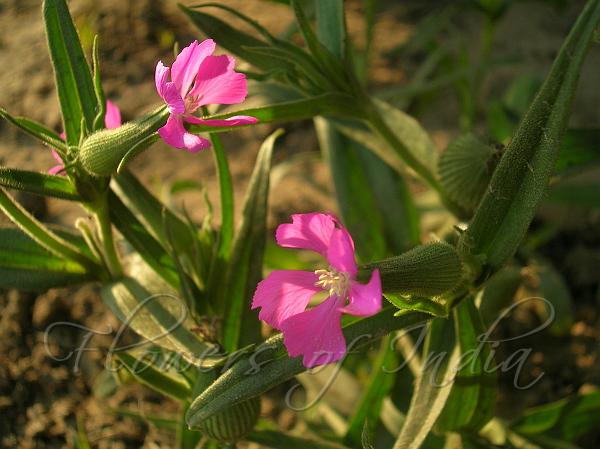|
| Cone Campion |
|

|

| File size | 1036016 |
| Original date | 2/10/08 4:51 PM |
| Resolution | 2048 x 1536 |
| Flash | Flash did not fire, auto |
| Focal length | 8.0mm |
| Exposure time | 1/282s |
| Aperture | 3.2 |
| Focus Distance | |
| Metering Mode | Partial |
| Camera make | NIKON |
| Camera model | E3700 |
| Sensor type |
|
|
|
|
Photo: |
Botanical name: Silene conoidea Family: Caryophyllaceae (Carnation family)
Synonyms: Conosilene conoidea, Cucubalus conoideus
Synonyms: Conosilene conoidea, Cucubalus conoideus
Cone Campion is an annual herb, up to 40 cm tall.
Stems are erect, branched or simple, densely glandular-velvety. Leaves
are 2.5-14 cm long, 0.2-1.2 cm wide, linear-lanceshaped, base
stem,-clasping at the nodes, stalkless, glandular-velvety. Bracts are
similar to leaves, but smaller in size. Flowers are borne in panicles,
with 3-5 flowers in lax clusters. Flower-stalks are densely
glandular-velvet-hairy. Sepal tube is 2.1-2.5 cm long, pointed, with
lanceshaped teeth, 30-nerved. Petals are pink to reddish, limb 8-9 mm,
notched or entire, claw 1.5-1.6 cm. Coronal scales are oblong.
Carpophore is about 1 mm, glabrous. Capsule is 1.1-1.8 cm, conical,
with narrow neck, included in the calyx. Seeds are 1.1 mm long,
kidney-shaped. Cone Campion is found in the Himalayas, S. Europe, N.
Africa and temperate Asia, at altitudes of 1500-2500 m. Flowering:
May-July.
Medicinal uses:  The plant is said to be emollient and is used in baths or as a
fumigant. The juice of the plant is used in the treatment of
ophthalmia.
The plant is said to be emollient and is used in baths or as a
fumigant. The juice of the plant is used in the treatment of
ophthalmia.
 The plant is said to be emollient and is used in baths or as a
fumigant. The juice of the plant is used in the treatment of
ophthalmia.
The plant is said to be emollient and is used in baths or as a
fumigant. The juice of the plant is used in the treatment of
ophthalmia. Identification credit: Gurcharan Singh
| Photographed in Indraprastha Park, Delhi & at Turtuk Village, Ladakh. |